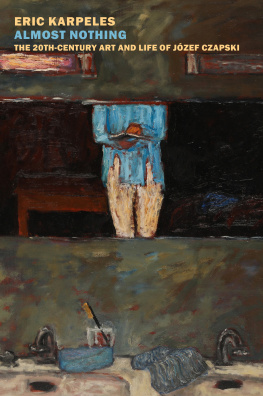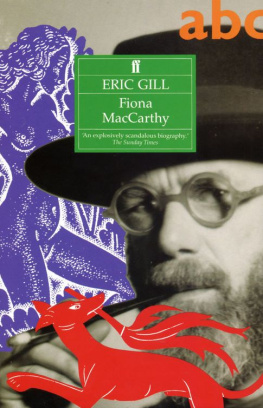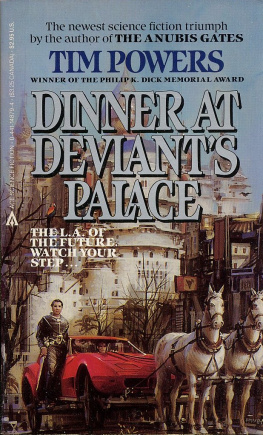Eric Cervini - The Deviants War
Here you can read online Eric Cervini - The Deviants War full text of the book (entire story) in english for free. Download pdf and epub, get meaning, cover and reviews about this ebook. publisher: Farrar, Straus and Giroux, genre: Detective and thriller. Description of the work, (preface) as well as reviews are available. Best literature library LitArk.com created for fans of good reading and offers a wide selection of genres:
Romance novel
Science fiction
Adventure
Detective
Science
History
Home and family
Prose
Art
Politics
Computer
Non-fiction
Religion
Business
Children
Humor
Choose a favorite category and find really read worthwhile books. Enjoy immersion in the world of imagination, feel the emotions of the characters or learn something new for yourself, make an fascinating discovery.

- Book:The Deviants War
- Author:
- Publisher:Farrar, Straus and Giroux
- Genre:
- Rating:4 / 5
- Favourites:Add to favourites
- Your mark:
- 80
- 1
- 2
- 3
- 4
- 5
The Deviants War: summary, description and annotation
We offer to read an annotation, description, summary or preface (depends on what the author of the book "The Deviants War" wrote himself). If you haven't found the necessary information about the book — write in the comments, we will try to find it.
The Deviants War — read online for free the complete book (whole text) full work
Below is the text of the book, divided by pages. System saving the place of the last page read, allows you to conveniently read the book "The Deviants War" online for free, without having to search again every time where you left off. Put a bookmark, and you can go to the page where you finished reading at any time.
Font size:
Interval:
Bookmark:
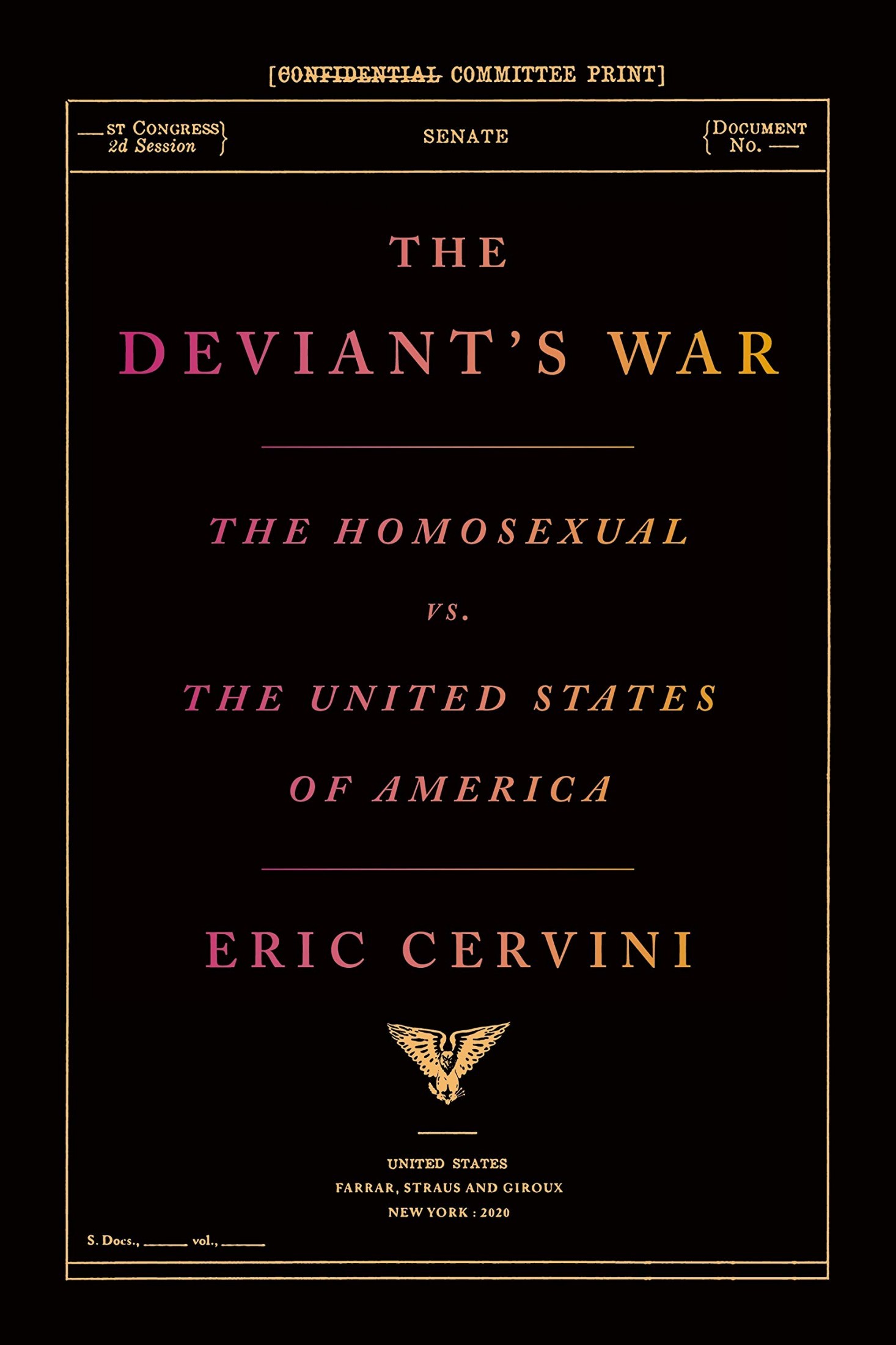
THE
DEVIANTS WAR

Farrar, Straus and Giroux
120 Broadway, New York 10271
Copyright 2020 by Eric Cervini
All rights reserved
Printed in the United States of America
First edition, 2020
Permissions Acknowledgments tk
Owing to limitations of space, illustration credits can be found on page 000.
Library of Congress Cataloging-in-Publication Data
ISBN: 978-0-374-13979-7
Designed by Gretchen Achilles
Our books may be purchased in bulk for promotional, educational, or business use. Please contact your local bookseller or the Macmillan Corporate and Premium Sales Department at 1800-221-7945, extension 5442, or by e-mail at MacmillanSpecialMarkets@macmillan.com.
www.fsgbooks.com
www.twitter.com/fsgbooks www.facebook.com/fsgbooks
1 3 5 7 9 10 8 6 4 2
To the teachers in my life, the most important of whom is my mother, Lynn
Vice is a monster of so frightful mien,
As, to be hated, needs but to be seen;
Yet seen too oft, familiar with her face,
We first endure, then pity, then embrace.
ALEXANDER POPE, 1733
Displayed on the wall of a police headquarters in a large American city, 1965
CONTENTS
INTRODUCTION: THE RITUAL
1. THE ASTRONOMER
2. THE LETTER
3. THE PANIC
4. THE UNION
5. THE MATTACHINE
6. THE BUREAU
7. THE CRUSADER
8. THE ALLIANCE
9. THE CONGRESSMAN
10. THE MARCH
11. THE BOUQUET
12. THE PICKET
13. THE STUDENT
14. THE ILLUSTRATOR
15. THE FLOOR PLAN
16. THE CHAOS
17. THE RIOTS
18. THE LIBERATION
19. THE PRIDE
20. THE CANDIDATE
EPILOGUE: THE WHITE HOUSE
NOTES
ACKNOWLEDGMENTS
INDEX
ILLUSTRATION CREDITS
A NOTE ABOUT THE AUTHOR
THE
DEVIANTS WAR
INTRODUCTION
THE RITUAL
It began, as usual, in a public restroom. For ten years, Laud Humphreys of Oklahoma had been an Episcopal priest, but now he watched the silent choreography of the men. As always, the ritual of a mens room, or tearoom, functioned somewhat like a game: positioning, signaling, contracting, payoff. Standing, looking, touching, fellatio.
Like the smell of urine, fear pervades the atmosphere of the tearooms, making furtive every stage of the interaction, Humphreys later wrote. But if all went well, the ritual concluded with an adjustment of the pants and a zip of the fly. A shoulder pat, a hand wave, or a quiet Thanks. Nobody hurt, nobody offended.
In 1966, as a doctoral student in sociology at Washington University in St. Louis, Humphreys had initiated his research in the citys public park restrooms. Married with two children, he developed a novel method to conceal his identity as a researcher and earn the trust of the sexual deviants. He adopted the role of the watch-queen, or a voyeur-lookout who guarded the men from nonparticipants and police officers. If someone approached, he coughed; if the coast was clear, he nodded.
By passing as a deviant, I had observed their sexual behavior without disturbing it, explained the sociologist. Over the course of two years, he observed hundreds of sexual acts, taking notes with a hidden tape recorder.
The next step in his methodology contributed most to the controversy that surrounded the publication of his findings. Humphreys also followed the men to their cars, recorded their license plate numbers, and then carried that information to a police station. There, after Humphreys claimed to be performing market research, friendly officers gave him the names and addresses of the men.
He waited a year, then changed his dress, hairstyle, and car. He traveled to the mens homes, rang their doorbells, and said he was a social health researcher. While sitting in their living rooms or drinking beer on their patios, he asked the men about their lives.
Over half of them, he learned, were married to women. The rest, even if they identified as gay, saw tearooms as safe havens. After all, where else could they go to meet others like themselves? In midcentury America, gay bars were perilous places. The police could raid them at any moment. Patrons risked being identified by coworkers, neighbors, or even the Federal Bureau of Investigation. At home, roommates or landlords were watching. Sometimes, police officers used telephoto lenses or high-powered binoculars to catch acts of sodomy or lewd conduct.
The names, addresses, and occupations of those arrested for homosexual activity often appeared in the next days newspaper, which exposed their deviancy to families and employers. Six Arrested in Perversion Case Here, read one typical headline. A seaman, twenty-five, of McAllister Street; an auto agency clerk, twenty-seven, of Clay Street; a musician, thirty-six, of Taylor Street; a drama coach, twenty-three, of Seventh Avenue; a photo refinisher, forty-three, of Laurel Street.
After World War II, homosexual arrestsincluding those for sodomy, dancing, kissing, or holding handsoccurred at the rate of one every ten minutes, each hour, each day, for fifteen years. In sum, one million citizens found themselves persecuted by the American state for sexual deviation.
Men unable to risk identification had only the public restroom, a space both public and private. When an intrudera policeman or an unsuspecting passerbyinterrupted the ritual, participants could claim to be using the restroom for its intended purpose. They simply performed huge elaborate disinterest until the threat washed his hands and disappeared.
Laud Humphreys ultimately concluded that police departments, by criminalizing sexual activity in public restrooms, created crime from a harmless activity, stigmatizing homosexuality and incentivizing blackmailers. He estimated that 5 percent of St. Louiss adult male population engaged in the ritual of the tearoom. What the covert deviant needs is a sexual machinecollapsible to hip-pocket size, silent in operation, he wrote. In tearoom sex he has the closest thing to such a device.
The sociologist also noticed something curious about the men he observed. When interviewed in their homes, those who visited tearooms tended to project a high level of morality. A breastplate of righteousness, Humphreys called it. Compared to a control group, tearoom participants lived in clean homes, drove nice cars, went to church, and supported the efforts of the local Vice Squad. They were conservative; they did not attend civil rights demonstrations. By embracing respectability, Humphreys concluded, these men blinded themselvesand othersfrom the humiliation of the tearoom.
With the publication of Humphreyss research, journalists and fellow sociologists leapt to denounce the former priest. He had deceived the tearoom-goers and made them vulnerable to prosecution, they argued. Washington Universitys chancellor, upset that Humphreys had not reported the men to the police, revoked his research grant and teaching contract.
Humphreys eventually repudiated the dishonest elements of his methodology, and at a 1974 sociology conference, while his wife sat in the audience, he announced that he was a gay man.
Sociology professors now teach Humphreyss book Tearoom Trade as an example of unethical research, ignoring his findings about the men who exited the tearoom before enshrouding themselves in cloaks of propriety. Meanwhile, stories of gay liberation in America often begin with a June 1969 uprising, instantaneous and transformative, outside a bar in Greenwich Village.
Font size:
Interval:
Bookmark:
Similar books «The Deviants War»
Look at similar books to The Deviants War. We have selected literature similar in name and meaning in the hope of providing readers with more options to find new, interesting, not yet read works.
Discussion, reviews of the book The Deviants War and just readers' own opinions. Leave your comments, write what you think about the work, its meaning or the main characters. Specify what exactly you liked and what you didn't like, and why you think so.




